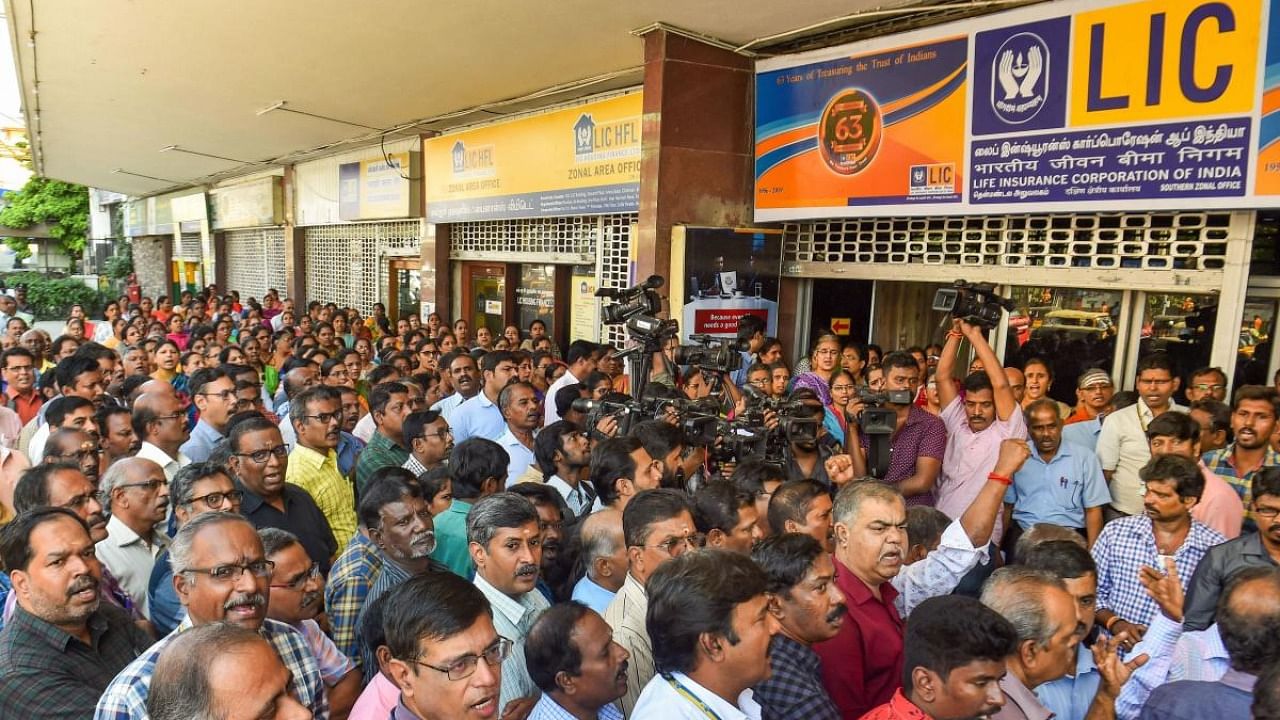
During the budget speech on February 1, 2021, Finance Minister Nirmala Sitharaman stated that the union government was considering selling 25% stake in the largest insurer Life Insurance Corporation of India as a part of the government’s strategy on divestment in government owned companies.
The FM said that this would give an opportunity to retail investors to participate in the wealth creation while helping the government reach the disinvestment target of Rs 2.10 lakh crore. Since LIC has been established through an Act of the parliament some amendments will have to be made under the LIC Act of 1956. The Finance Bill 2021 presented in the parliament proposes the amendment, among other things, in Section 5 of the Life Insurance corporation Act of 1956, which would increase the authorised capital of LIC from the existing Rs 100 crore to Rs 25,000 crore.
This would comprise 2,500 crore shares at a face value of Rs 10 each. The government will have to infuse Rs 25,000 crores in LIC to shore up its paid-up capital before the IPO process is initiated.
The government has indicated that it wants to divest 10% of the paid-up capital which would result in issuance of 250 crore shares amounting to Rs 2,500 crore. This issue will be at a premium and since the government proposes to raise around Rs 1 lakh crore from the issue, a ballpark figure could put the offer price at around Rs 400 per share. Assuming a listing price of Rs 400 to Rs 450, this could vault LIC in to the third position in terms of market capitalisation behind Reliance Industries (Rs 13.40 lakh crore) and TCS (Rs 11.44 lakh crore)! Incidentally listed life insurer HDFC Life has a market cap of Rs1.39 lakh crore with a PE ratio of 102 times and SBI Life has a market cap of Rs 90,000 crore with a PE ratio of 62 times.
The government has hinted that some portion of the issue will be reserved for employees and policy holders. What is not sure is how much of this will be reserved for employees and policy holders.
Department of Investment and Public Asset Management (DIPAM) which deals with matters relating to management of Central Government investments in equity including disinvestment of equity in Central Public Sector Undertakings has already selected actuarial firm Milliman Advisors for ascertaining the embedded value of LIC in the initial public offer and Deloitte and SBI Caps as pre-IPO transaction advisors.
Tuhin Kanta Pandey, secretary of DIPAM hinted in February that investors can expect the LIC IPO to be launched after October 2021. Vipin Anand, MD, LIC of India said recently that a
clear picture about the parameters of IPO will emerge once the embedded valuation is complete and anchor investors are consulted.
What will be the impact of the IPO on policyholders?
Though LIC’s share has been falling with the opening of life insurance industry to private life insurers it still has a dominant position in the industry with 69.00% of the market share thanks to its extensive distribution network and a trusted brand image. So when a behemoth like LIC goes public it is but natural that there will be concerns among many stakeholders mainly the policy holders.
Should the policyholders worry about the dilution of shareholding? What are their concerns? Are the policy holders worried that bonuses paid on non-link participating policies will be reduced? Are the concerns about withdrawal of sovereign guarantee on policies which have made them so popular among public? Will it be about rejection of claims on flimsy grounds? While none of these are going to be impacted after listing of LIC, it is likely to boost transparency and governance of the insures and make processes more efficient.
As far distribution of surpluses are concerned, 5% of the total valuation surplus of Rs 53,955 crore amounting to Rs 2,697 crore was paid as dividend to central government for the period ended FY 19-20 and the remaining 95% is used for distributing bonuses on policies.
Once the company is listed the shareholders will expect the corporation to pay a higher dividend. The government after the IPO will still hold 75% of the shareholding and so there will not be any threat to the sovereign guarantee on policies.
Though the claim ratio had come down during FY 19-20 it was still healthy and was 95% for death claims and 88% for maturity claims.
Will it change the investment policies?
While nearly 70% of the premium collected is invested in G secs LIC is a dominant player in equity markets and nearly 15% of the investments are made in equity markets.
Without going into numbers, LIC’s investments are on par with that of Foreign Portfolio Investors in stock markets and it is no secret that the government has used LIC as a white knight to bail it out on many occasions in the past when the going was tough.
LIC was nudged by the government to pick up 51% stake in IDBI Bank in 2018 and bail it out. LIC has helped the government in many issues whether it was the OFS of NTPC or IPO of HAL or of New India Assurance or UDAY bonds issued by state governments in 2016 earning it a sobriquet of Bailout corporation of India (LIC has also made investments in social and infrastructure projects).
The new investors may question the rationale of the corporation’s investment policies, but it may not have a significant impact on the same.
(The writer is a Chartered Financial Analyst and a former banker and currently teaches at Manipal Academy of BFSI, Bengaluru)